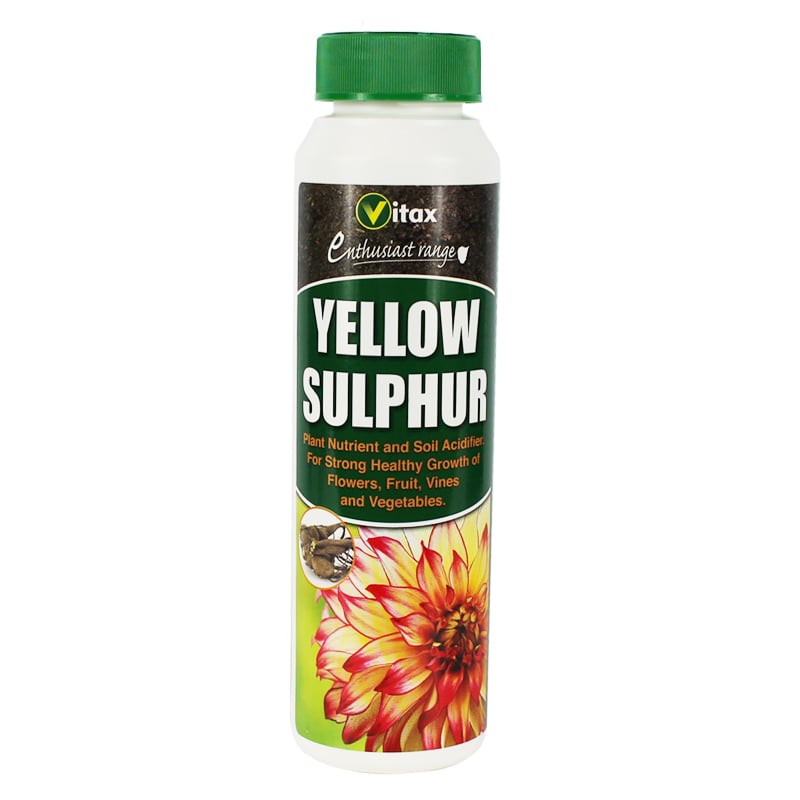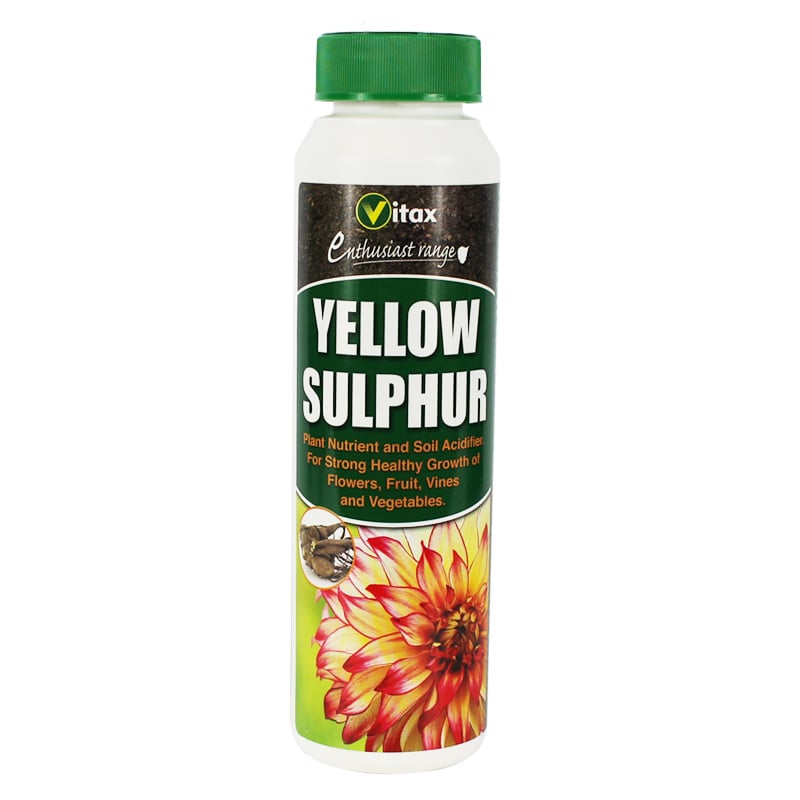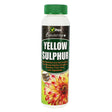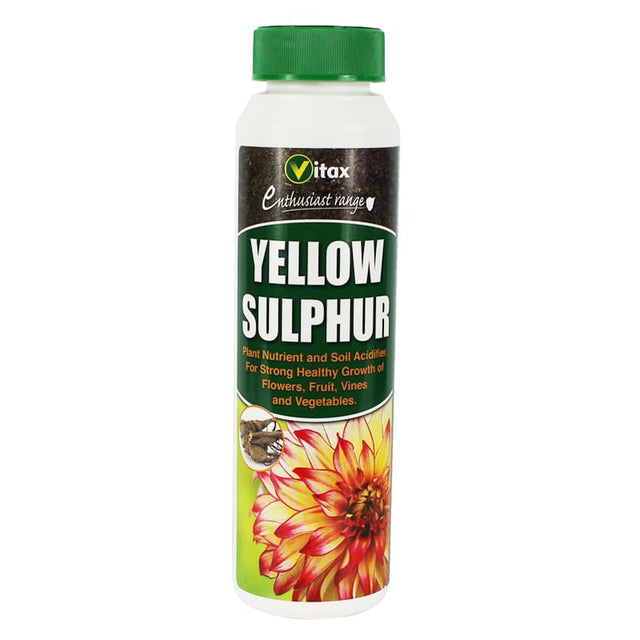Vitax Yellow Sulphur Powder for Powdery Mildew
Vitax Yellow Sulphur Powder for Powdery Mildew is backordered and will ship as soon as it is back in stock.
Yellow Sulphur provides an essential secondary nutrient that all plants need for healthy growth. It is a key part of many amino acids and supports efficient protein production, which is vital for strong development. With modern pollution controls reducing natural sulphur in the atmosphere, many soils in the UK are now lacking this nutrient.
Using this sulphur powder for soil helps restore balance and keep plants productive and resilient. You can also try our organic seaweed plant food to which promotes growth and resilience with natural minerals.
Key Features of Sulphur Powder For Soil
- Supplies sulphur powder for soil to support protein production and healthy growth
- Helps prevent yellowing of young leaves and improves plant strength
- Reduces susceptibility to powdery mildew and black spot on roses
- Conditions soil for acid loving plants such as azalea rhododendron heather and camellia
- Can neutralise hard water when plants are grown in tubs and planters
Why Add Sulphur For Plants
As cleaner air has reduced sulphur deposition, some soils now require extra sulphur to keep plants healthy. Deficiency is shown as yellowing between the veins and around the edges of the youngest leaves. Lack of sulphur can also increase susceptibility to diseases such as powdery mildew and black spot.
How To Use Sulphur Powder In The Garden
Sulphur can be applied as a tonic either directly onto foliage or around the base of plants. Shake the pack before use and remove the cap. Squeeze the pack gently while pointing slightly downwards to discharge the powder and ensure even coverage of the surface being treated.
Planting new trees, shrubs or flowers? Try our Mycorrhizal Fungi for stronger plant roots.
Where To Use Yellow Sulphur
Yellow Sulphur helps promote strong healthy growth and prevents leaf yellowing in plants such as chrysanthemum, cineraria, delphinium, ornamental hop, hyacinth, cucumber, gooseberry, grape vine, marrow, pea, rose and strawberry. It can also be used to improve soil conditions for acid loving plants including azalea, rhododendron, heather and camellia.
Additional Notes For Soil And Planters
Yellow Sulphur can also help neutralise the effects of hard water when plants are grown in tubs or planters. This improves conditions for growth and supports long term plant health.
Size
225g
Directions For Use
Foliar and plant application: Dust lightly ensuring all leaf surfaces are evenly covered.
Soil nutrient application and acidification: Apply directly to the soil surface at around 70–140 g per m² and rake in well. When using for acidification, check the soil pH after a few months and repeat as needed until the required level is reached. Heavier soils may require repeat applications. Treatment can be carried out around living plants.
Frequently Asked Questions
What is Yellow Sulphur used for?
It is a plant nutrient and soil acidifier that helps prevent yellowing of leaves, supports protein production and reduces susceptibility to powdery mildew and black spot.
How do I use sulphur powder in the garden?
It can be applied as a tonic by puffing directly onto foliage or dusted onto soil around the base of plants. Always ensure even coverage when applying.
Can I use it on all plants?
It can be used on many fruit, vegetables and ornamentals including gooseberry, cucumber, pea, marrow, rose and strawberry. It is also suitable for acid loving plants such as azalea and rhododendron.
How often should I apply it?
Check plant health and soil pH to determine frequency. When used for acidification, repeat applications may be required especially on heavier soils until the required pH is reached.
Is it suitable for acid loving plants?
Yes. It can be used as a soil conditioner to improve growing conditions for acid loving plants such as azalea, rhododendron, heather and camellia.
Does it help with powdery mildew and black spot?
Yes. Sulphur deficiency increases susceptibility to these diseases, and using sulphur powder helps reduce the risk while supporting strong healthy growth.
Reviews
Reviews
How To Use
How To Use
Sulphur can be applied as a tonic, either puffed directly onto foilage or the soil around the base of plants.
Shake the pack before use. remove the cap and apply by squeezing the pack to discharge the powder.
Point slightly downwards and ensure the whole surface to be treated is adequately covered.
When used for acidification, after a few months determine the PH of the soil and repeat the process until the pH is reduced to the required level. heavier soils normally require repeat applications.
Treatment can be carried out around living plants.
Bottle contents: 225g
More Information
More Information
Yellow sulphur powder is not suitable for use on red or white currants and the following gooseberry varieties; Bedford Yellow, Cousen's Seedling, Early Sulphur, Golden Drop, Leveller or yellow fruited varieties. Some varieties of apple, pear and ornamentals are also known to be sensitive.



